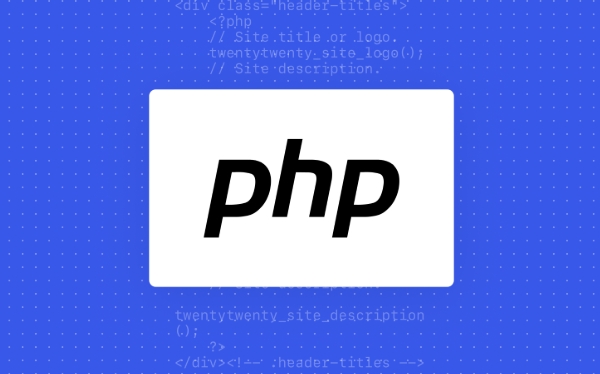The easiest way to convert an object to a PHP array is to use type conversion (array) $object. For stdClass objects, properties will be converted directly into array key-value pairs; but private or protected property names will be modified, such as \0MyClass\0name. For custom classes, you can manually map properties or use reflection to get common properties. Recursive conversion is required when processing nested objects to ensure that objects at all levels are converted. You can also consider built-in methods such as json_decode(json_encode($object), true) or framework tools such as Laravel's Arr::fromArrayable(). The choice depends on structural complexity and performance requirements.

When you need to convert an object into a PHP array, the most straightforward way is using type casting. Just do (array) $yourObject , and that's it. But there's more under the hood worth knowing, especially when dealing with different types of objects—like standard objects, custom classes, or even nested structures.

How basic casting works
Casting an object to an array in PHP is simple:

$array = (array) $object;
This works fine for stdClass objects created dynamically, like from JSON decoding. The object properties become keys in the array, and their values ??are preserved.
However, visibility matters. If your object comes from a class with private or protected properties, those will show up in the array but with mangled names. For example, a private property name in a class from MyClass will show as \0MyClass\0name . So if you're seeing weird keys in your array, that's probably why.

Handling custom classes
If you're working with a custom class, blind casting might not give you exactly what you want. That's because casting doesn't respect any magic methods like __toArray() or similar unless you explicitly write logic for them.
You have two options:
Manually map the properties:
$array = [ 'name' => $object->name, 'age' => $object->age, ];Or use reflection to extract all public properties:
$reflection = new ReflectionObject($object); $properties = $reflection->getProperties(ReflectionProperty::IS_PUBLIC); $array = []; foreach ($properties as $prop) { $array[$prop->getName()] = $prop->getValue($object); }
Reflection gives you more control, especially if you want to skip certain properties or handle specific types differently.
Dealing with nested objects
If your object has other objects inside (like a User object containing an Address object), casting alone won't fully flatten it. You'll end up with arrays containing objects still.
To avoid this, you need recursion:
function objectToArray($object) {
if (!is_object($object)) return $object;
$array = (array) $object;
foreach ($array as &$value) {
$value = objectToArray($value);
}
return $array;
}This function dives into every value and makes sure nested objects also get cast properly. It's especially useful when working with data like decoded JSON or ORM results.
When to consider built-in helpers
PHP has some built-in tools that can help too:
-
json_decode(json_encode($object), true)– this converts the object to JSON then back to an array. Works well for serializable objects, but may strip out resources or complex types. - Laravel's
Arr::fromArrayable()or Symfony's normalizers – if you're in a framework, these utilities often simplify things further.
Choose based on context. If performance matters or you know the structure is flat, stick with casting or recursion. If you're deep in a framework or need extra normalization steps, use the helper tools.
Basically that's it.
The above is the detailed content of how to cast an object to a php array. For more information, please follow other related articles on the PHP Chinese website!

Hot AI Tools

Undress AI Tool
Undress images for free

Undresser.AI Undress
AI-powered app for creating realistic nude photos

AI Clothes Remover
Online AI tool for removing clothes from photos.

Clothoff.io
AI clothes remover

Video Face Swap
Swap faces in any video effortlessly with our completely free AI face swap tool!

Hot Article

Hot Tools

Notepad++7.3.1
Easy-to-use and free code editor

SublimeText3 Chinese version
Chinese version, very easy to use

Zend Studio 13.0.1
Powerful PHP integrated development environment

Dreamweaver CS6
Visual web development tools

SublimeText3 Mac version
God-level code editing software (SublimeText3)

Hot Topics
 How do I implement authentication and authorization in PHP?
Jun 20, 2025 am 01:03 AM
How do I implement authentication and authorization in PHP?
Jun 20, 2025 am 01:03 AM
TosecurelyhandleauthenticationandauthorizationinPHP,followthesesteps:1.Alwayshashpasswordswithpassword_hash()andverifyusingpassword_verify(),usepreparedstatementstopreventSQLinjection,andstoreuserdatain$_SESSIONafterlogin.2.Implementrole-basedaccessc
 How can you handle file uploads securely in PHP?
Jun 19, 2025 am 01:05 AM
How can you handle file uploads securely in PHP?
Jun 19, 2025 am 01:05 AM
To safely handle file uploads in PHP, the core is to verify file types, rename files, and restrict permissions. 1. Use finfo_file() to check the real MIME type, and only specific types such as image/jpeg are allowed; 2. Use uniqid() to generate random file names and store them in non-Web root directory; 3. Limit file size through php.ini and HTML forms, and set directory permissions to 0755; 4. Use ClamAV to scan malware to enhance security. These steps effectively prevent security vulnerabilities and ensure that the file upload process is safe and reliable.
 What are the differences between == (loose comparison) and === (strict comparison) in PHP?
Jun 19, 2025 am 01:07 AM
What are the differences between == (loose comparison) and === (strict comparison) in PHP?
Jun 19, 2025 am 01:07 AM
In PHP, the main difference between == and == is the strictness of type checking. ==Type conversion will be performed before comparison, for example, 5=="5" returns true, and ===Request that the value and type are the same before true will be returned, for example, 5==="5" returns false. In usage scenarios, === is more secure and should be used first, and == is only used when type conversion is required.
 How do I perform arithmetic operations in PHP ( , -, *, /, %)?
Jun 19, 2025 pm 05:13 PM
How do I perform arithmetic operations in PHP ( , -, *, /, %)?
Jun 19, 2025 pm 05:13 PM
The methods of using basic mathematical operations in PHP are as follows: 1. Addition signs support integers and floating-point numbers, and can also be used for variables. String numbers will be automatically converted but not recommended to dependencies; 2. Subtraction signs use - signs, variables are the same, and type conversion is also applicable; 3. Multiplication signs use * signs, which are suitable for numbers and similar strings; 4. Division uses / signs, which need to avoid dividing by zero, and note that the result may be floating-point numbers; 5. Taking the modulus signs can be used to judge odd and even numbers, and when processing negative numbers, the remainder signs are consistent with the dividend. The key to using these operators correctly is to ensure that the data types are clear and the boundary situation is handled well.
 How can you interact with NoSQL databases (e.g., MongoDB, Redis) from PHP?
Jun 19, 2025 am 01:07 AM
How can you interact with NoSQL databases (e.g., MongoDB, Redis) from PHP?
Jun 19, 2025 am 01:07 AM
Yes, PHP can interact with NoSQL databases like MongoDB and Redis through specific extensions or libraries. First, use the MongoDBPHP driver (installed through PECL or Composer) to create client instances and operate databases and collections, supporting insertion, query, aggregation and other operations; second, use the Predis library or phpredis extension to connect to Redis, perform key-value settings and acquisitions, and recommend phpredis for high-performance scenarios, while Predis is convenient for rapid deployment; both are suitable for production environments and are well-documented.
 How do I stay up-to-date with the latest PHP developments and best practices?
Jun 23, 2025 am 12:56 AM
How do I stay up-to-date with the latest PHP developments and best practices?
Jun 23, 2025 am 12:56 AM
TostaycurrentwithPHPdevelopmentsandbestpractices,followkeynewssourceslikePHP.netandPHPWeekly,engagewithcommunitiesonforumsandconferences,keeptoolingupdatedandgraduallyadoptnewfeatures,andreadorcontributetoopensourceprojects.First,followreliablesource
 What is PHP, and why is it used for web development?
Jun 23, 2025 am 12:55 AM
What is PHP, and why is it used for web development?
Jun 23, 2025 am 12:55 AM
PHPbecamepopularforwebdevelopmentduetoitseaseoflearning,seamlessintegrationwithHTML,widespreadhostingsupport,andalargeecosystemincludingframeworkslikeLaravelandCMSplatformslikeWordPress.Itexcelsinhandlingformsubmissions,managingusersessions,interacti
 How to set PHP time zone?
Jun 25, 2025 am 01:00 AM
How to set PHP time zone?
Jun 25, 2025 am 01:00 AM
TosettherighttimezoneinPHP,usedate_default_timezone_set()functionatthestartofyourscriptwithavalididentifiersuchas'America/New_York'.1.Usedate_default_timezone_set()beforeanydate/timefunctions.2.Alternatively,configurethephp.inifilebysettingdate.timez






